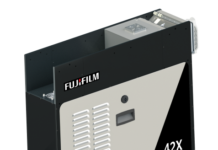Over the past 90 years, FUJIFILM has transformed into a global, multi-national company that innovates in a diverse range of businesses like healthcare, materials, business innovation and imaging.
FUJIFILM Holdings Corporation also announced its new global Purpose, ‘Giving our world more smiles’, which underscores the company’s commitment to bring diverse ideas, unique capabilities and extraordinary people together to change the world. The launch of the new global Purpose coincided with the celebration of FUJIFILM’s 90th anniversary on January 20, 2024.
‘We will continue to embrace the challenge of learning from the past to shape the future,’ said Teiichi Goto, president and CEO, representative director of FUJIFILM Holdings Corporation. ‘By combining the FUJIFILM Group’s strengths in technology and the wisdom of our diverse and talented workforce, we will contribute to solving social issues through all of our businesses, as we bring smiles to so many around the world.’
Milestones
On January 20, 1934, Fuji Photo Film Co., Ltd. (currently FUJIFILM Holdings Corporation) was established. The parent corporation, Dainippon Celluloid Co., Ltd. (currently Daicel Corporation), recognised the potential of photographic and motion picture films as a new application of celluloid, a synthetic resin, and began manufacturing photographic films that had previously only been imported from Europe and the U.S.
After World War II, FUJIFILM started research and development into the domestic production of colour film. In 1948, the company introduced FUJI COLOR FILM, an outer-reversal-type, medium-format general colour film.
FUJIFILM diversified its business through the development and use of its leading-edge, proprietary technologies throughout the 1960s. Recognising the potential of electronic photography, FUJIFILM undertook extensive research into xerography. In 1961, the company entered the Technology Agreement with UK-based Rank Xerox Limited and established a joint venture with Fuji Xerox Co., Ltd. (currently FUJIFILM Business Innovation Corp.) in the following year. Fuji Xerox Co., Ltd. launched Fuji Xerox 914, the first domestically manufactured plain paper copier.
FUJIFILM leveraged its materials chemistry, including high-precision coating and high-precision forming, to take on new endeavours, such as magnetic memory materials for broadcast videotapes, pressure-sensitive paper, pre-sensitised (PS) plates for offset printing and micrographic equipment.
Amid intensifying competition in the office field, FUJIFILM released the Fuji Xerox 2200, the world’s first and smallest copier, in 1973 and the Fuji Xerox 3500, a small, high-speed, high-performance copier, in 1978. Around that time, It also started focusing on applications for improving business operations and became a pioneer in office productivity solutions.
In the 1990s, while continuing to refine its analog technology, FUJIFILM took on greater challenges in anticipation of the digital age.
In the imaging field, FUJIFILM released the FUJICHROME Velvia, a photographic film loved by professional photographers for its vivid and sharp colours; the INSTAX mini 10, a card-sized instant photo system; and the FinePix 700, a megapixel digital camera that significantly advanced performance through higher image quality and made digital photography more accessible. In the field of in-store silver halide photo prints, FUJIFILM launched the Frontier digital minilab and seized the lead in the digitalisation of the industry.
Outside of photography, FUJIFILM continued to develop products and technologies to meet the needs of the digital age that have paved the way to its current businesses, such as the SYNAPSE medical imaging and information management system, display materials, digital full-colour copiers, production printers and the advanced super thin-layer and high-output metal media (ATOMM) technology used in magnetic tapes.
In 2001, FUJIFILM acquired an additional 25 percent of the shares from the U.S.-based Xerox Corporation and made the company a consolidated subsidiary.
FUJIFILM set its new CO2 emissions reduction target for the Group’s entire product life cycle to 50 percent of the FY2019 level by FY2030, and CO2 emissions from the Group’s operations to net zero (zero carbon) by FY2040.
Importantly, the South African head office was constructed, and opened last year, to fall in line with FUJIFILM Holdings’ climate action targets: to produce net zero CO2 emissions by the fiscal year ending March 2041. The new office is set to meet this goal, having been designed with the help of a green energy consultant. As such, it incorporates the use of solar power panels with a capacity of 65 kVA, biometric access control, motion sensors, day/night lighting and energy efficient plumbing that consumes less water.
‘We at Fujifilm Graphic Communication South Africa are proud to be part of this heritage and are extremely excited about our new purpose,’ said general manager, Grant Potgieter. ‘There will be a shift in our approach with all our stakeholders – customers, partners, suppliers and, more importantly, our own staff, to find ways to give them all more smiles. We believe that people smile when they are happy and so our purpose will be driven around creating happiness and wellness for all. Here’s to the next 90 years of building on this proud legacy.’
FUJIFILM SOUTH AFRICA
+27 11 430 5400
https://www.fujifilmgraphicsystems.co.za/






















